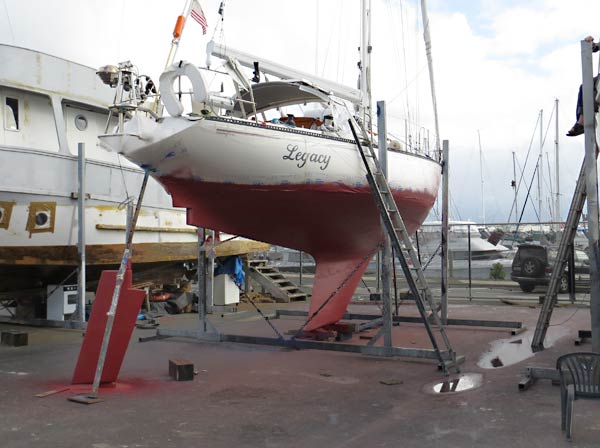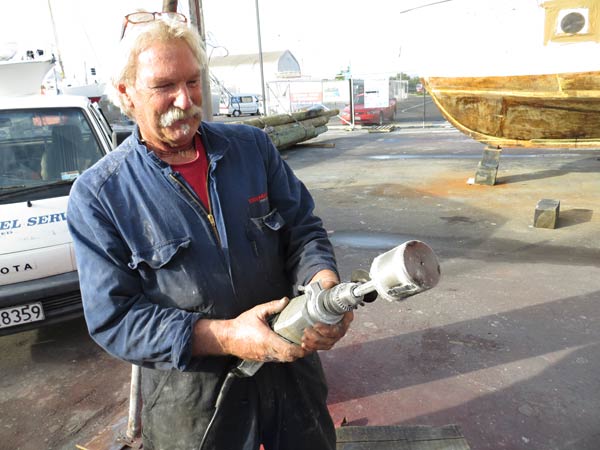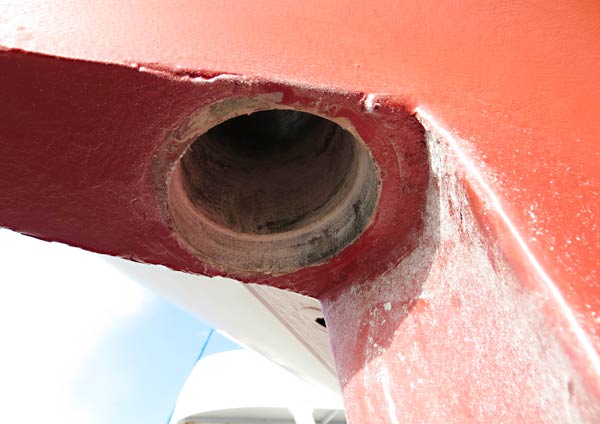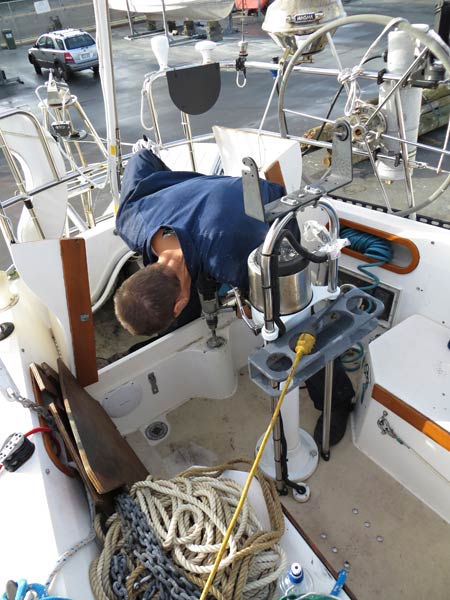May, 2013 while hauled out in Tauranga, New Zealand
One of our major projects while Legacy was hauled out of the water was to fix the excessive play in the rudder. The play caused two problems. The wobble pushed the packing (the material that is supposed to keep water from coming into the boat from around the rudder shaft) away from the rudder shaft. In rough seas, our bilge pump was running thirty times a day! The second issue was the noise. When we turned to port, the rudder would squeal. When we turned to starboard, it would sound like a cow. At the end of a ten day passage, I felt more like a farmer than a sailor.

The rudder bearing on the Catalina 38 is just a fiberglass tube over the rudder’s stainless steel shaft. After about 40,000 miles (22,000 sailed by us, the rest by the previous owner) the fiberglass tube was badly worn. There isn’t much room for bearings or bushings and it was a tricky fix.
More than up to the job were the guys from Marine Diesel Services. They took a day to think about the issue and came up with a great solution.

Malcolm designed and built a boring tool for his drill. It had a round guide that would ride in the fiberglass tube to keep the tool centered and cutting blades behind the guide.

Above is the result of a few minutes of drilling with Malcolm’s tool. Gordy used the same tool at the top of the rudder tube.

They then made bushings to glue into the bored out tube and the result was a nice, tight rudder with virtually no play.
I’m so glad we found these guys! In general, the boat workers here in New Zealand have been incredible – much better than most I’ve had experience with in the states. We heard a lot about the high cost of boat work here but in my experience, I think it’s comparable to the prices in the US and a better value as the work gets done right and done right the first time. -Rich






